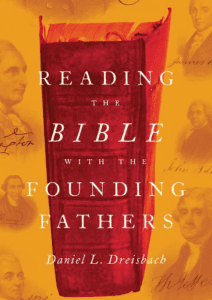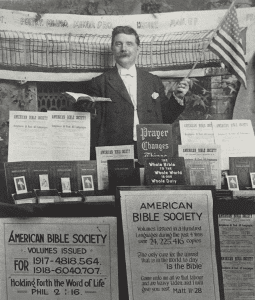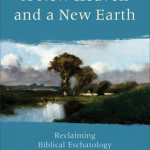 If I could convince ordinary Bible readers of one thing it would be this: look up those Bible references in your Bible’s cross-referencing notes. They are not only a goldmine but the result of lots and lots of work, and they are designed to help Bible readers see that the NT authors knew they were taking up space in a long, long story.
If I could convince ordinary Bible readers of one thing it would be this: look up those Bible references in your Bible’s cross-referencing notes. They are not only a goldmine but the result of lots and lots of work, and they are designed to help Bible readers see that the NT authors knew they were taking up space in a long, long story.
Take, for instance, Mark 11:1-11 (bottom of post), the story of Jesus’ entry into Jerusalem on a donkey. Every reader of the Bible who knows Zechariah 9:9 will “catch” that Mark is doing some very serious business here. Here is that text:
Rejoice greatly, Daughter Zion.
Sing aloud, Daughter Jerusalem.
Look, your king will come to you.
He is righteous and victorious.
He is humble and riding on an ass,
on a colt, the offspring of a donkey.
When you read Zechariah 9:9 in its context … well, things get complex and cool at the same time and you then realize that Matthew wasn’t sure everyone would catch the allusion to Zechariah so he spelled it out (Matthew 21:4-5).
What happens for the Bible reader who looks at cross references (who are doing what Matthew did for us) is that the Bible suddenly becomes a maze of connections. This way of reading Mark 11 is not about being clever by half but being astute enough to “catch” what is really going on in the Bible itself.
All of this is spelled out in Richard Hays, Reading Backwards: Figural Christology and the Fourfold Gospel Witness. An opening set of statements about how Mark works his wonders:
But Mark’s way of drawing upon Scripture, like his narrative style more generally, is indirect and allusive. Mark for the most part works his narrative magic through hints and allusions, giving just enough clues to tease the reader into further exploration and reflection. On rare occasions, he steps from behind the curtain to call the reader’s attention to a particularly important intertextual allusion (e.g., “Let the reader understand” in 13:14), but for the most part his scriptural references are woven seamlessly into the fabric of the story. The story is intelligible, at one level, for readers who do not hear the scriptural echoes. But for those who do have ears to hear, new levels of complexity and significance open up (17).
Ah, and if you look at Mark 11 below you will observe that Mark doesn’t say “Lookee here, reader friend. This is an allusion. Do you see what I’m doing? I’m drawing you back to Zechariah so you will know how to read this entry by Jesus the right way.” Instead, he alludes without comment. It is up to the reader to make the connections. What he doesn’t tell you up front is that Zechariah’s donkey rider is Israel’s KING! But Mark 11:9-10 sure do lead you to see kingship.
What is Mark about? The identity of Jesus, first and foremost. (After all, Mark is a Gospel and a Gospel tells us about Jesus first and foremost.)
In the early chapters of the story, he is a powerful, wonder-working figure who seems comparable to Elijah or one of the prophets of old (6:15). At various points in the tale, his words and actions seem to correspond typologically to the words and actions of Moses or Jeremiah. And as the plot moves toward its climax in Jerusalem, there are abundant hints that Jesus is the bearer of David’s legacy as king of Israel. Each of these accounts of Jesus’ identity illumines some facet of his mission and identity, yet they all remain tentative, partial, and inadequate. Jesus remains elusive and avoids direct speech about the secret of his own personhood, except in his cryptic utterances about the Son of Man (18).
Then you arrive at Mark 14:62 (and I would add 15:39 about the Son of God), with 14:62’s allusion to Daniel 7 and then all that proceeds suddenly takes on new vividness. So, all along, the reader says, this Jesus is the Son of God, the Son of Man, the king of Israel. What a new vision for a king! But even that is not enough, and here Hays breaks through:
And upon rereading, we discover numerous passages scattered through this Gospel that offer intimations of a disturbing truth: Jesus’ identity with the one God of Israel. Unlike the Gospel of John—which explicitly declares that Jesus is the Logos, the Son who is one with the Father—Mark shies away from overt ontological declarations. Nonetheless, Mark’s Gospel suggests that Jesus is, in some way that defies comprehension, the embodiment of God’s presence. Mark never quite dares to articulate this claim explicitly; it is too scandalous for direct speech [I added this last italics](19).
Richard Hays dips into Mark 1:2-3; 2:7; 4:35-41; 6:34; 6:45-52, and then the complicating passages where “Jesus’ non-identity with God” seems to be freshly heard (12:35-37; 14:62; and esp 15:34). These elements are held in “taut suspension” (27). Thus: “His central character, Jesus, seems to be at the same time—if we may put it crudely—both the God of Israel and a human being not simply identical with the God of Israel” (27).
But we don’t see this unless we probe the cross references for those passages above (and Hays will lead you to a good interpretation of each). As Hays puts it:
… if the scriptural intertexts in Mark are ignored, a diminished Christology inevitably follows. The full impact of Mark’s Christology can be discerned only when we attend to the poetics of allusion imbedded in Mark’s intertextual narrative strategy (28).
For Mark there is a way of telling this story but directness will not get it done. Instead, Hays shows, Mark evokes a christology by connecting Jesus to the Story of Israel over and over again — allusion, echo, mystery. “Those who have ears to hear will hear” (31).
And this is where this all leads: “If Jesus is the embodiment of Israel’s God, and if the body in whom these figural correspondences to Israel’s Scripture are enacted ends up nailed to a cross, what does that tell us about the identity of God?” (32).
The cross references in your Bible will lead you to wonder, or as Hays says it:
We will find ourselves drawn into the contemplation of a paradoxical revelation that shatters our categories and exceeds our understanding. We will learn to stand before the mystery in silence, to acknowledge the limitation of our understanding, and to wonder (32).
Mark 11:1-11
Mark 11:1 When Jesus and his followers approached Jerusalem, they came to Bethphage and Bethany at the Mount of Olives. Jesus gave two disciples a task, 2 saying to them, “Go into the village over there. As soon as you enter it, you will find tied up there a colt that no one has ridden. Untie it and bring it here. 3 If anyone says to you, ‘Why are you doing this?’ say, ‘Its master needs it, and he will send it back right away.’”
Mark 11:4They went and found a colt tied to a gate outside on the street, and they untied it. 5 Some people standing around said to them, “What are you doing, untying the colt?” 6 They told them just what Jesus said, and they left them alone. 7They brought the colt to Jesus and threw their clothes upon it, and he sat on it.8 Many people spread out their clothes on the road while others spread branches cut from the fields. 9 Those in front of him and those following were shouting, “Hosanna! Blessings on the one who comes in the name of the Lord!10 Blessings on the coming kingdom of our ancestor David! Hosanna in the highest!”
11 Jesus entered Jerusalem and went into the temple. After he looked around at everything, because it was already late in the evening, he returned to Bethany with the Twelve.











